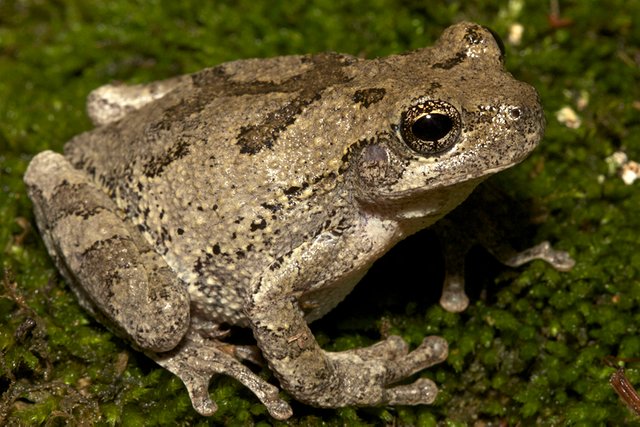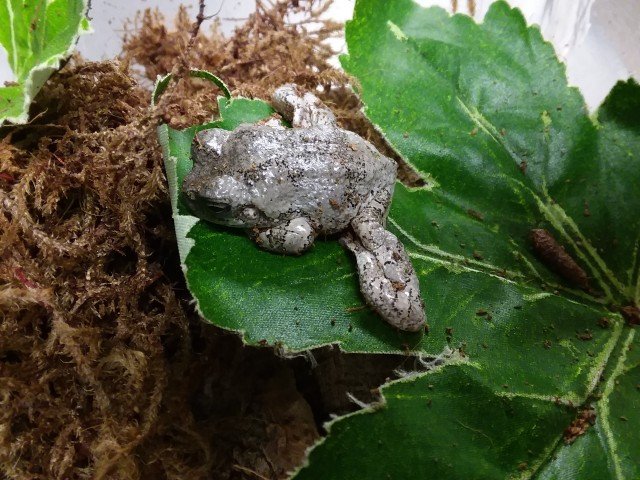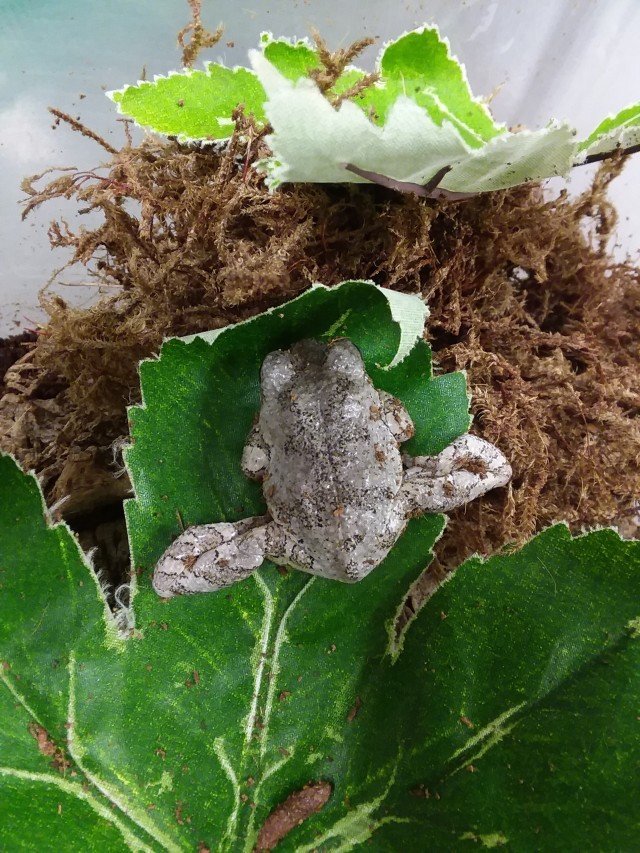All Animals Have A Story (Part 1): Cope's Gray Treefrog
I work at an animal care facility that exclusively exhibits live Virginia-native wildlife, both in an indoor museum setting and on an outdoor boardwalk trail. From tiny lizards to our huge alligators, all of our animals reside at the facility for one important reason: they cannot be released into the wild due to their health status or for legal reasons. Some have been orphaned or injured and are incapable of survival on their own; in a zoo setting, they can live long full lives under our care. Others are unwanted pets (or wild animals that were "rescued" by well-meaning citizens), unable to be released as they could pose an environmental risk as an invasive animal. As we often tell our guests, all of our animals have their own unique story.

We house several species of native treefrogs, but the Cope's gray treefrog is easily one of my favorites. They are fairly charismatic little animals, and are amusing to watch as they are often more active than the other species we display. These little guys are also quite vocal, singing out in long, almost musical trills that fill our World of Darkness exhibit gallery.
However, one of these little frogs immediately stands out from the others.

This splay-legged treefrog has been in our collection for over 8 years now. He was brought to us as a rescue; a homeowner surrendered him and told us the little guy had gotten caught in a closing door and was partially crushed. It only took our herpetology staff and vet tech a moment to verify that the frog's hind legs were almost completely paralyzed. We promised we would give the treefrog an exam to assess his health, but we admitted to the man that more than likely the frog would have to be euthanized, as at first glance it was believed he would be unlikely to survive and would be in pain until his passing.
Once brought in to the clinic for an assessment, the prognosis improved a little. From the moment he arrived, the frog was actually quite active and alert, moving around his container despite the paralysis. What shocked just about everyone was that he immediately accepted food. One of the best indicators of a severe problem in an animal is that they often refuse to eat or have difficulty eating; the fact that this frog was able to do so so readily was incredibly encouraging. It was decided that he would be given a chance as long as his good eating habits continued.
Flash forward to today. Eight years after his arrival, this little frog is going strong (not bad since their life-span is about 9-10 years!). Though his hind legs are completely useless, it doesn't slow him down at all. In fact, he may be one of our most active treefrogs. He climbs, burrows, "walks", and even has some limited swimming capabilities. Moving his enclosure requires some delicate care as his balance is a little off, however he is a popular animal for class room education programs. Obviously, this frog would have perished in the wild long, long ago; unable to leap, he would have had great difficulty catching prey and escaping from predators. In captivity, we can ensure that his nutritional needs are met, and he is provided an adequate enclosure fit for a handicapped frog.

Cases like this are why zoos and aquariums are so important. It's not just about public education or entertainment, but these facilities offer a chance for animals that would likely stand no chance otherwise. Under the care of herpetology staff and a vet team, this little frog will live a full lifespan despite what was surely a death sentence in the wild. Next time you visit a zoo or other animal facility, take the time to ask keepers or volunteers about your favorite animals. All of these creatures have a story!
Image Links: 1

Excellent story and cool little creature. It speaks highly of you and your staff that you gave this guy a chance, and as I always find in my experiences... nature is flat amazing. I've learned long ago not to count animals out, even though their conditions would defeat and demoralize most people. Like you, we always look to prevent suffering, but we're often surprised with the resiliance of animals to situations that seem hopeless. Great job with the frog and fantastic post.
It's really amazing what they can come back from. Reptiles and amphibians in general are far hardier than people give them credit for..and of course turtles are damned near indestructible!
I gave you a follow; you have some pretty cool content!
I am so glad the little guy not only survived but is thriving at the zoo. Does he have a name?
He actually does not, and this is part of our museum policy. We like to remind the public that these are stil considered wild animals, not pets, so we avoid giving our animals names. There are a couple exceptions to the rule; some animals need names for training purposes (our otters know their names so we can give them commands) and others have been given nicknames by the community for marketing purposes (like our woodchuck "Chesapeake Chuck" for Groundhog Day).
I can your point. Once they become pets, the dynamics change...
Great stoy and good writing.i like your post and upvoted.